Dosing Calculator
Find how much salt is needed to reach the specific salinity in your aquarium type.
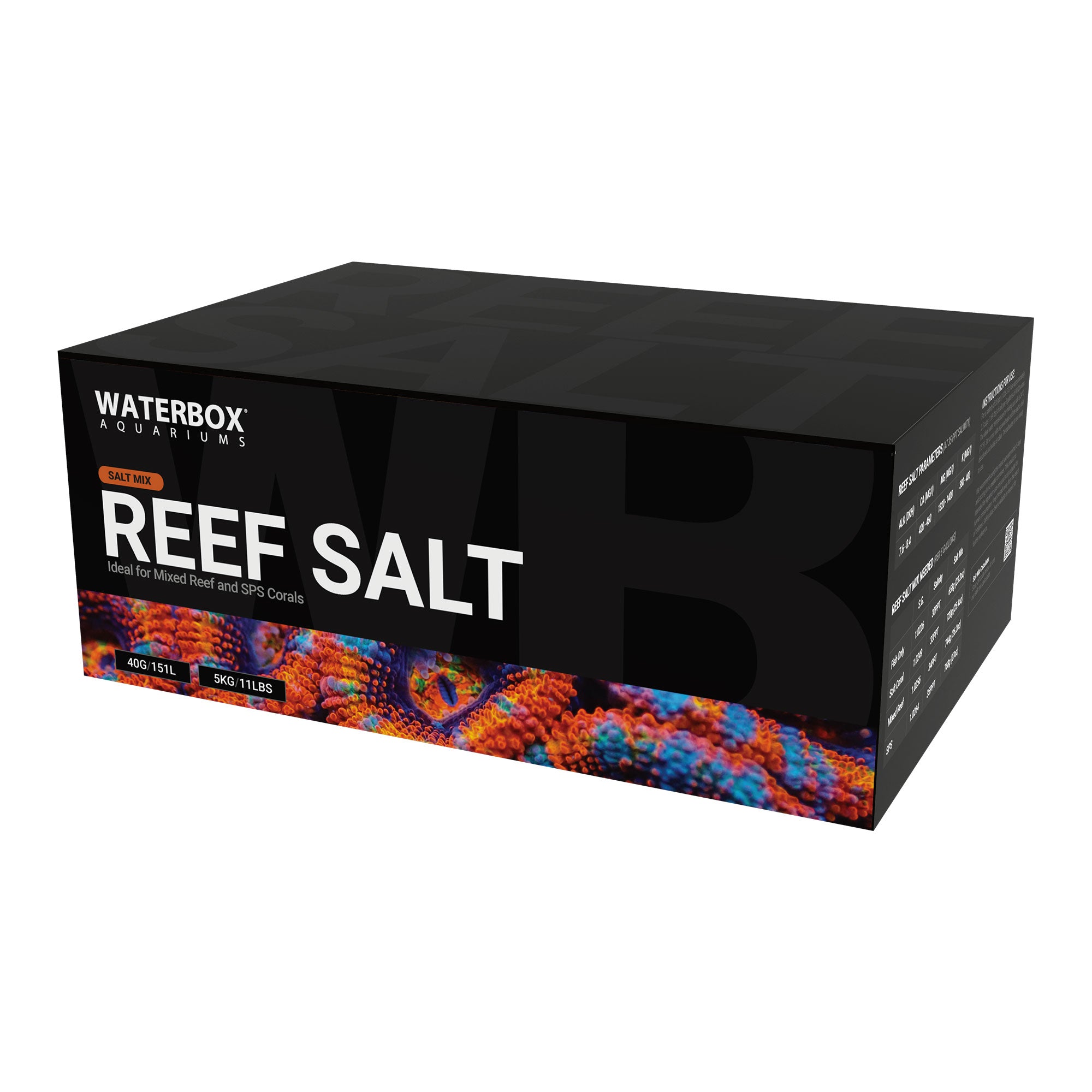
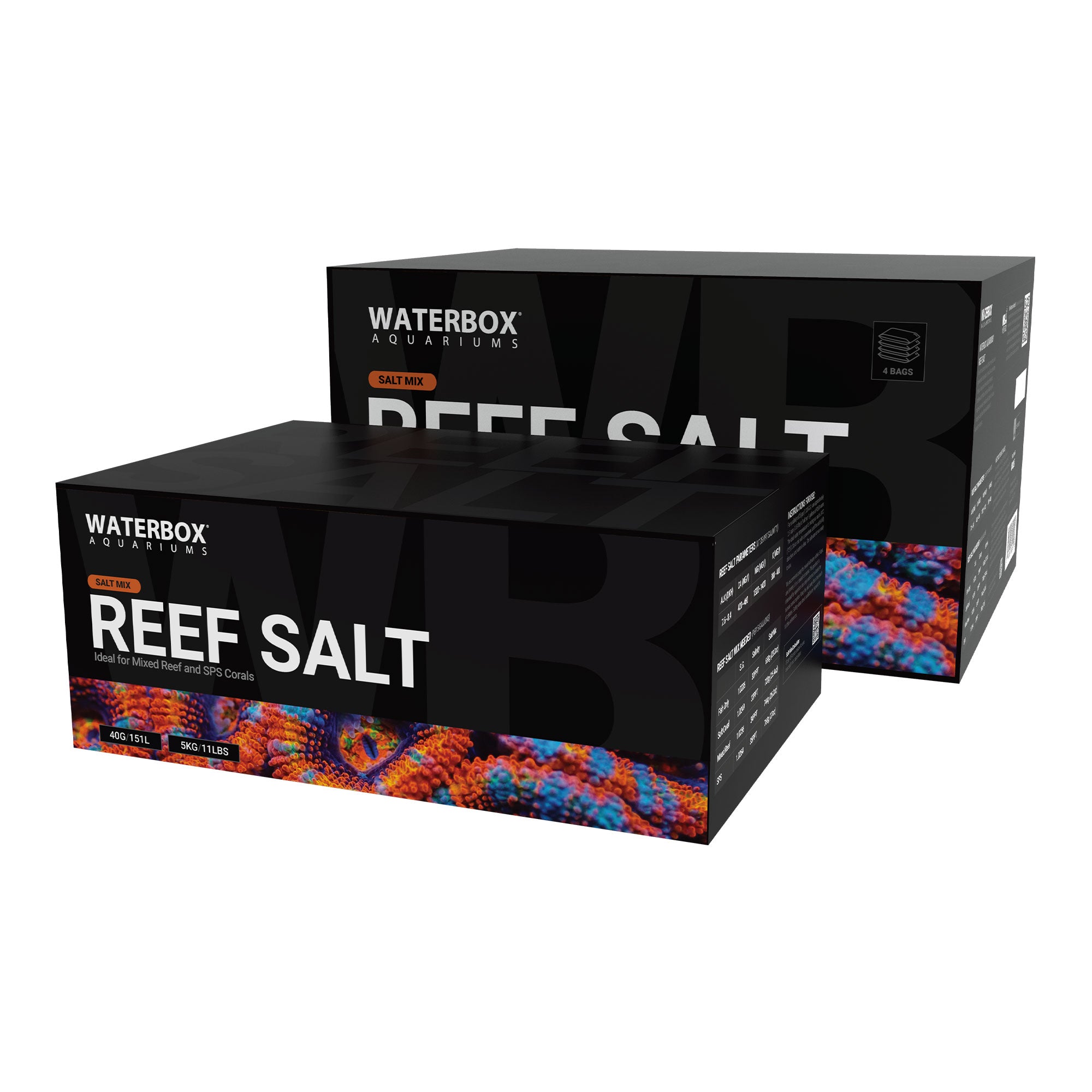


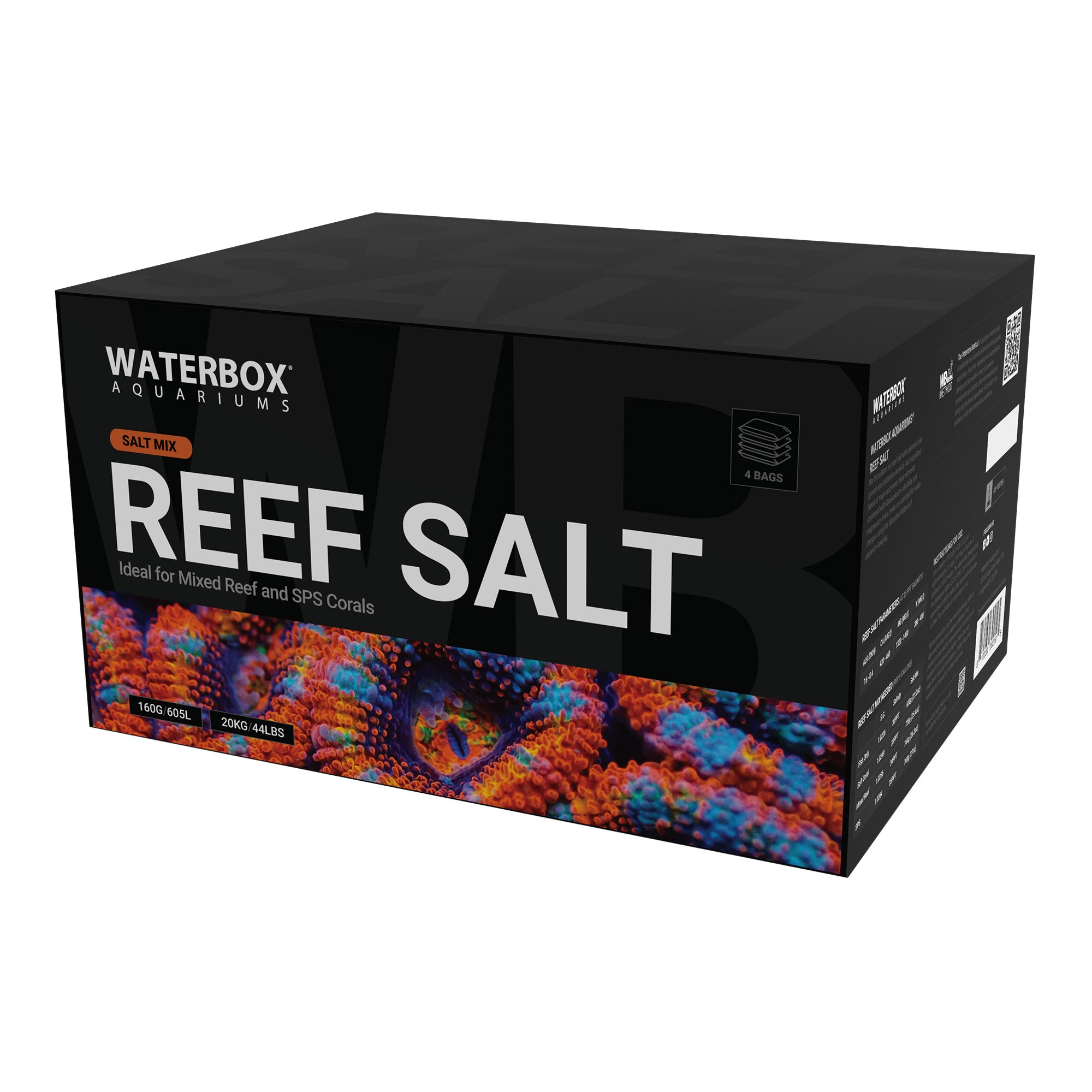
• Designed specifically for mixed reefs and SPS
• Synthetic Reef Salt Mix
• Full of major an minor trace elements
• Ultra-fast and clean mixing
• ICP-OES tested every 2000lbs. produced
5KG box
Includes 1 x 5kg/11lb bag
20KG box
Includes 4 x 5kg/11lb bags


Creating the perfect reef environment begins with the foundation of seawater itself. Waterbox Reef Salt was developed for aquarists who demand consistency, clarity, and confidence in every mix. Formulated from high-purity ingredients, balanced for coral health, and tested with advanced ICP technology, it’s the dependable salt your reef can trust—batch after batch.
Every successful reef system relies on a precise balance of three major components: alkalinity, calcium, and magnesium. These elements form the backbone of coral health and the chemistry that drives your reef’s growth and stability. Waterbox Reef Salt provides these critical components in optimal proportions—Alkalinity 8.0 dKH, Calcium 460 ppm, Magnesium 1400 ppm—a range proven to promote coral growth while maintaining long-term stability across a wide variety of reef systems.
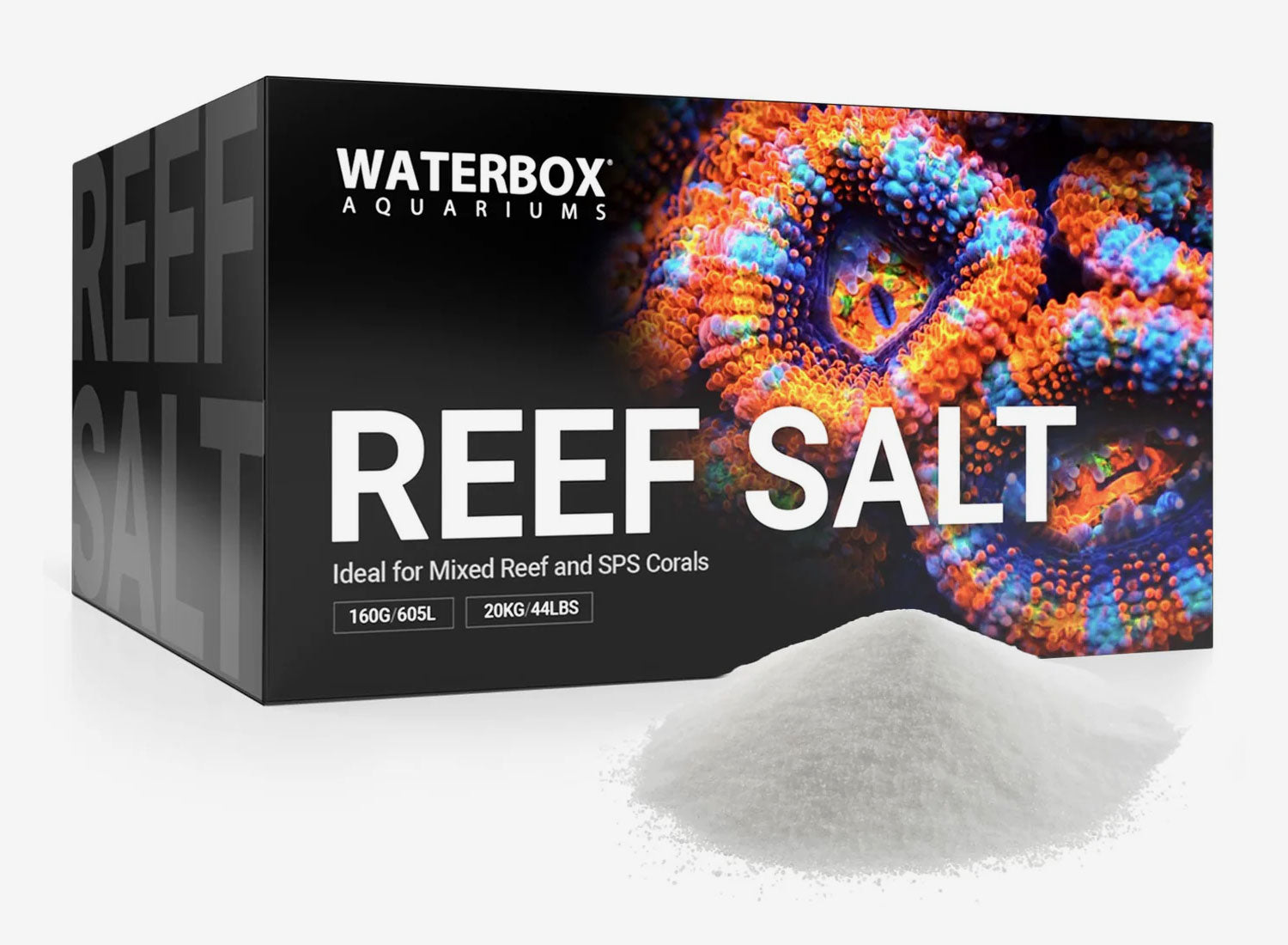
While the major elements build the framework, the ocean’s brilliance lies in its trace elements. Iron, manganese, iodine, strontium, and dozens of others play vital roles in coral coloration, metabolic function, and tissue development.Over time, these trace elements are depleted through coral absorption, protein skimming, and filtration. Without regular replenishment, coral colors fade and growth slows.Waterbox Reef Salt is enriched with a full spectrum of essential trace elements, restoring your system with every water change. It’s more than a salt mix—it’s a complete oceanic solution that keeps your reef vibrant, balanced, and alive.
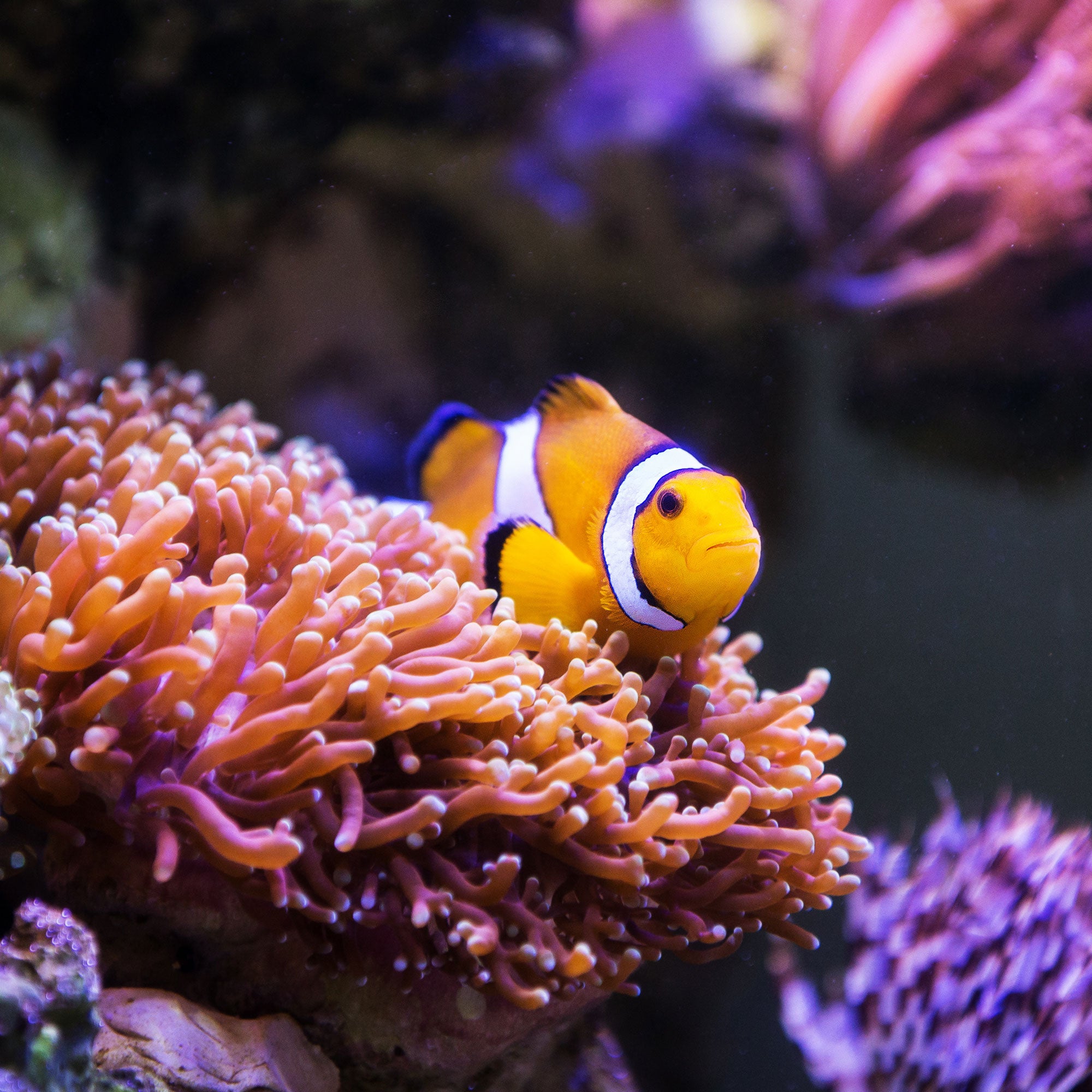
Consistency is the hallmark of Waterbox Reef Salt. Each batch is manufactured in small 2,000-pound lots under tightly controlled conditions to ensure purity and repeatability. By working in smaller quantities, we can verify every stage of production with rigorous quality checks.
Every batch is ICP-tested to confirm exact levels of major, minor, and trace elements. This advanced testing process detects even minute impurities and verifies that each box you open matches the parameters printed on the label.The result: no surprises, no inconsistencies—just reef-safe, laboratory-verified seawater every time.

Time is valuable—and so is clarity. Waterbox Reef Salt is engineered to dissolve completely and clear within just 15 minutes at 74–76°F. No residue, no cloudiness—just pristine water ready for use.
For reef keepers who like to prepare ahead, Waterbox Reef Salt offers unmatched stability. Once mixed, it maintains excellent clarity and chemistry for up to five days without aeration. Whether you’re preparing a small batch for your nano tank or hundreds of gallons for a large reef, you can trust consistent results every time.
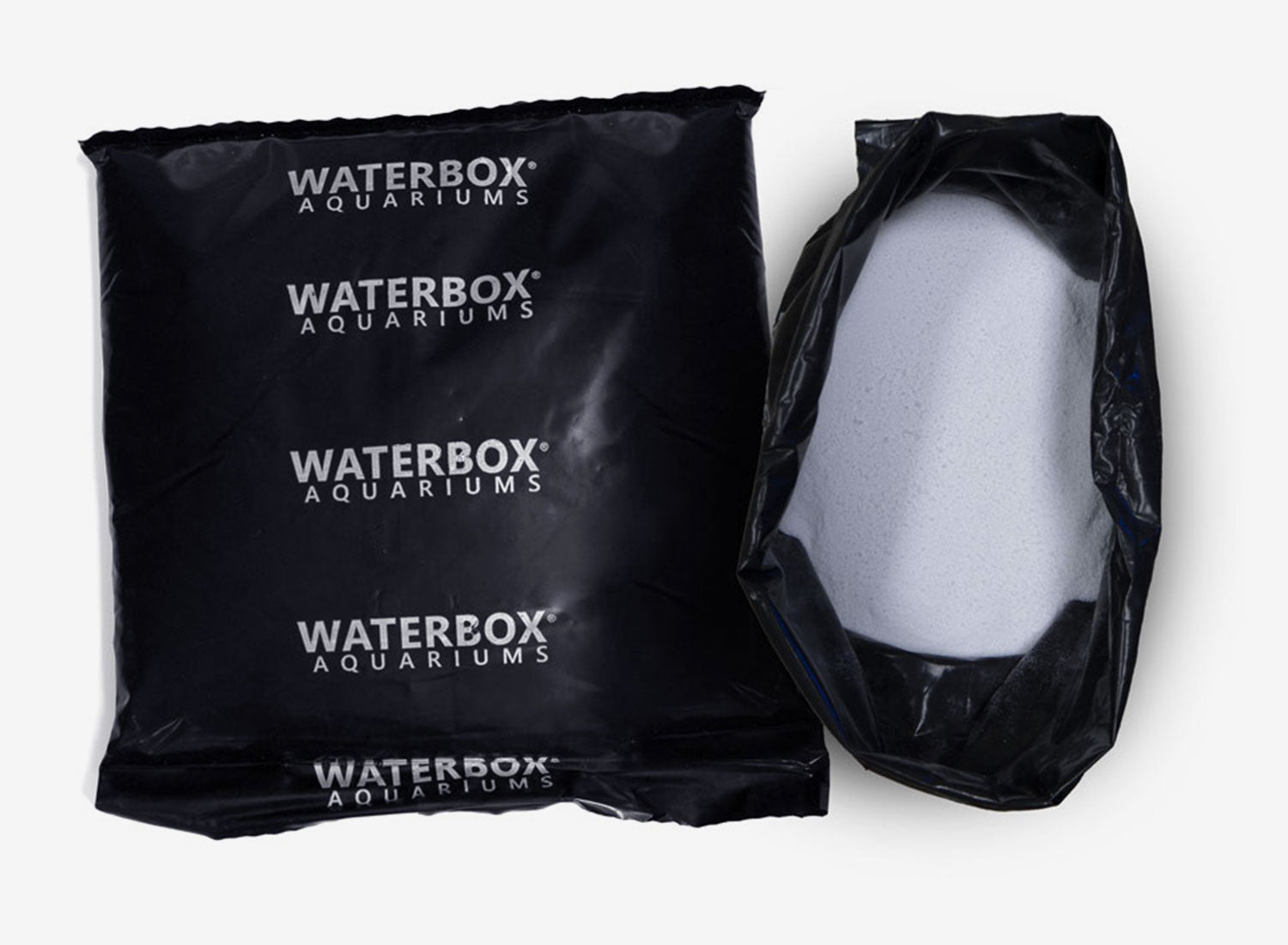
Every 20 kg box of Waterbox Reef Salt is divided into four individually sealed black bags. This multi-bag system prevents moisture contamination and protects against light exposure, ensuring the salt remains fresh between uses.Each bag is easy to open, measure, and reseal—perfect for hobbyists who prefer smaller, consistent mixing sessions. For best results, store opened bags in a cool, dry place.
ICP-Verified Purity
ach batch individually tested to ensure the most consistent salt mix available.
Fast-Mixing Clarity
Fully dissolves in 15 minutes at 74–76°F with zero residue.
Long-Term Stability
Holds perfect chemistry for up to five days without aeration.
Balanced Parameters
8.0 dKH / 460 ppm Ca / 1400 ppm Mg—ideal for most reef aquariums.
Full Trace Element Spectrum
Restores vital nutrients lost to coral uptake and filtration.
Small-Batch Control
Produced in 2,000 lb laboratory lots for unmatched consistency.
Protected Packaging
Four sealed black bags maintain freshness and prevent contamination.
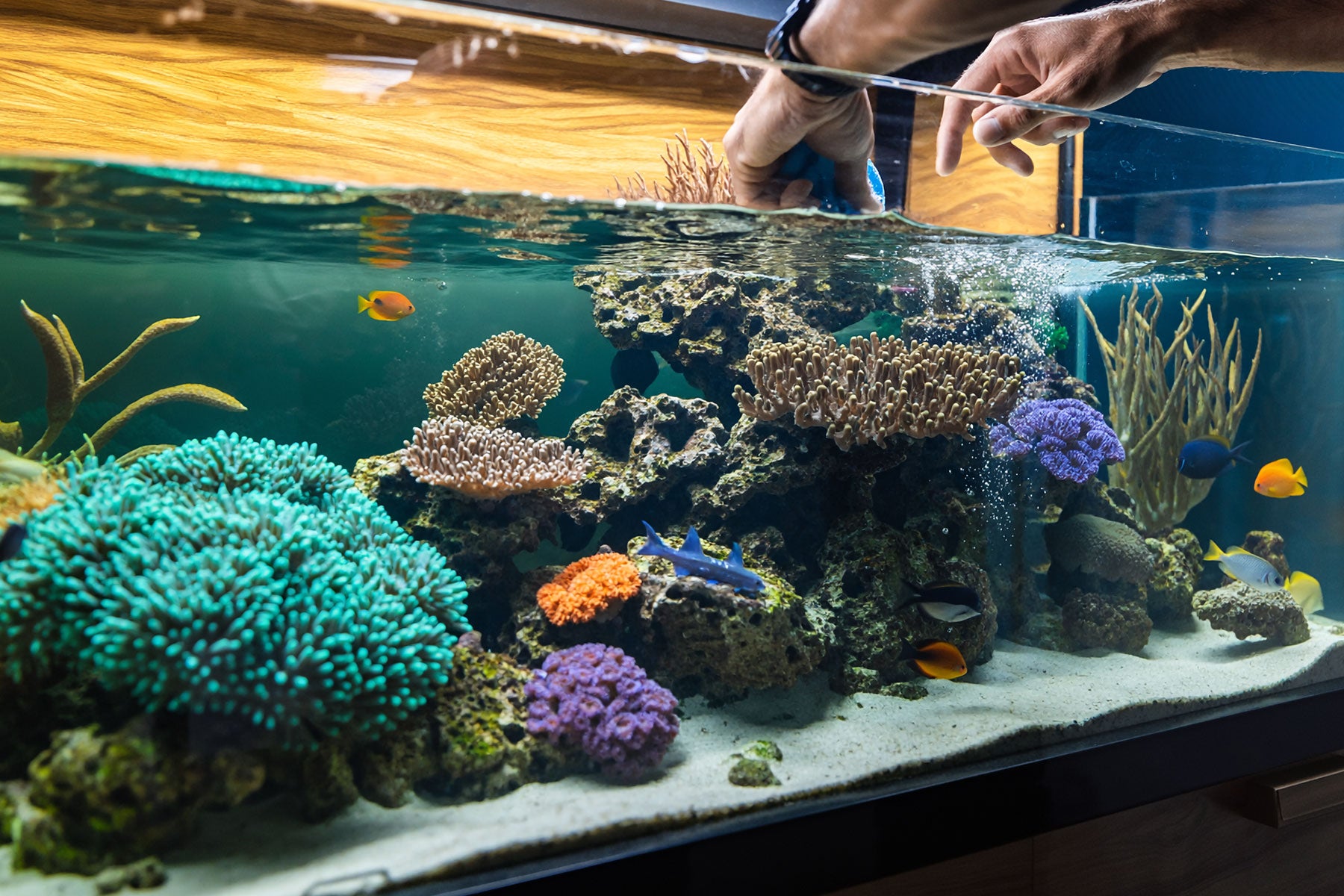
From hobbyists starting their first nano reef to experts maintaining coral farms, Waterbox Reef Salt has earned a reputation for reliability and performance. It delivers the same clean, stable mix every time—making it the choice of reef keepers who value precision and peace of mind.
Whether you’re performing routine water changes, cycling a new system, or dialing in your dosing, Waterbox Reef Salt supports the delicate balance your reef depends on—so you can focus on what truly matters: growing a thriving, beautiful reef.
Find how much salt is needed to reach the specific salinity in your aquarium type.
Start with approximately ½ cup salt to 1 gallon of water. Once mixed with the base amount you can adjust the salinity to your desired level by adding more salt or water.
Always use RO/DI freshwater as you never want to use tap water in your saltwater aquarium. The ideal water temperature for mixing is between 74- and 76-degrees Fahrenheit. You can raise the water temperature after mixing is completed to match your aquarium temperature to avoid fluctuations.
Stir or use a small circulation pump to mix the salt for 15 minutes or until water is clear.
You can store the mixed saltwater for up to 5 days in a closed container. Due to chance of evaporation test salinity before use. You do not need to circulate the mixed salt during storage but is beneficial to mix briefly before use.
Waterbox Salt is packaged in black bags to protect against light exposure. Opened bags should be securely closed in between uses and stored in a cool place.
Any changes to an aquarium should be made over time to reduce the risk of causing fluctuations to your water parameters which can stress livestock. Our recommended method for switching salt is to do a weekly 10% water change with Waterbox Salt for the first 4-6 weeks and then resume your regular water change percentage and schedule.
You can find the batch number under the lid of the box.
Test kits available to hobbyists are not able to measure changes with 100% accuracy and can sometimes be used incorrectly. Any variation is typically less than 3% and will have no impact on the aquarium inhabitants.
If you have any questions, you are always welcome to contact us. We'll get back to you as soon as possible, within 24 hours on weekdays.
Shipping Information
Use this text to answer questions in as much detail as possible for your customers.
Customer Support
Use this text to answer questions in as much detail as possible for your customers.
FAQ’s
Use this text to answer questions in as much detail as possible for your customers.
Contact Us
Use this text to answer questions in as much detail as possible for your customers.